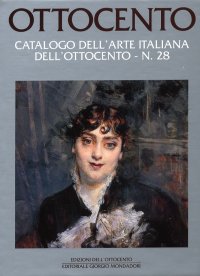Giovanni Boldini. Il Piacere
Rovereto, Mart, November 14, 2020 - February 28, 2021.
Edited by Beatrice Avanzi and Tiziano Panconi.
Genova, 2020; paperback, pp. 368, col. ill., col. plates, cm 24x28.
cover price: € 54.00
|
Books included in the offer:
Giovanni Boldini. Il Piacere
Rovereto, Mart, November 14, 2020 - February 28, 2021.
Edited by Beatrice Avanzi and Tiziano Panconi.
Genova, 2020; paperback, pp. 368, col. ill., col. plates, cm 24x28.
FREE (cover price: € 54.00)
Ottocento. Catalogo dell'Arte Italiana dell'Ottocento. Vol. 30
Milano, 2001; paperback, pp. 495, b/w ill., col. plates, cm 22x30,5.
FREE (cover price: € 40.00)
Ottocento. Catalogo dell'arte italiana dell'Ottocento. VOL. 28
Milano, 1999; bound, pp. 800, col. plates, cm 22x30.
FREE (cover price: € 77.47)
St. Donat and Alcuin's Acrostics: Case Studies in Carolingian Modulation
Basic Rozmeri
KWB - Kim Williams Books
Fucecchio, 2003; paperback, pp. 125, 50 b/w ill., cm 17x24.
(Nexus: Architecture and Mathematics).
series: Nexus: Architecture and Mathematics
ISBN: 88-88479-02-3 - EAN13: 9788888479026
Subject: Essays (Art or Architecture),History of Architecture,Masterpiece,Religious Architecture/Art
Period: 0-1000 (0-XI) Ancient World,1000-1400 (XII-XIV) Middle Ages
Places: Europe
Extra: Slavic Art and Culture
Languages: 
Weight: 0.39 kg
This study consists of two phases: first to test the applicability of the modular organization of space in an architectural monument; and, second, to see if the same concept is applicable to a work of art in a different medium. By using the analytical tools of number symbolism and sequential organization of space, the study emphasized relationships between forms, meanings, and functions of the acrostics in regard to significant theological, historical, and political events of the time.
The Carolingian Renaissance is embodied in Charlemagne's political ambitions for creating a well-organized society by implementing ideas of unity, clarity, order, and reason in the modular way of thinking. Thus, this dominant principle creates close relationships between different areas of artistic expression and emphasizes the interdisciplinary nature of the medieval culture in general.
About the author. Dr. Rozmeri Basic is an Associate Professor in the School of Art at the University of Oklahoma in Norman. After earning her undergraduate degree at the University of Belgrade, and graduate work at the University of Tokyo and the University of Southern California, she earned her Master's in Art History and her doctorate in Comparative Arts from Ohio University.
TABLE OF CONTENTS
Foreword by Robert Wortman
Preface
Chapter One: The Carolingian renaissance or Renaissance?
Chapter Two: A Carolingian Concept of Modulation
Chapter Three: The Palatine Chapel at Aachen
Chapter Four: A Brief History of Zadar and The Church of St. Donat in Zadar
Chapter Five: Alcuin and Latin Poetry
Chapter Six: Alcuin's mesostich Magna quidem pavido
Chapter Seven: Conclusions and Conjectures











